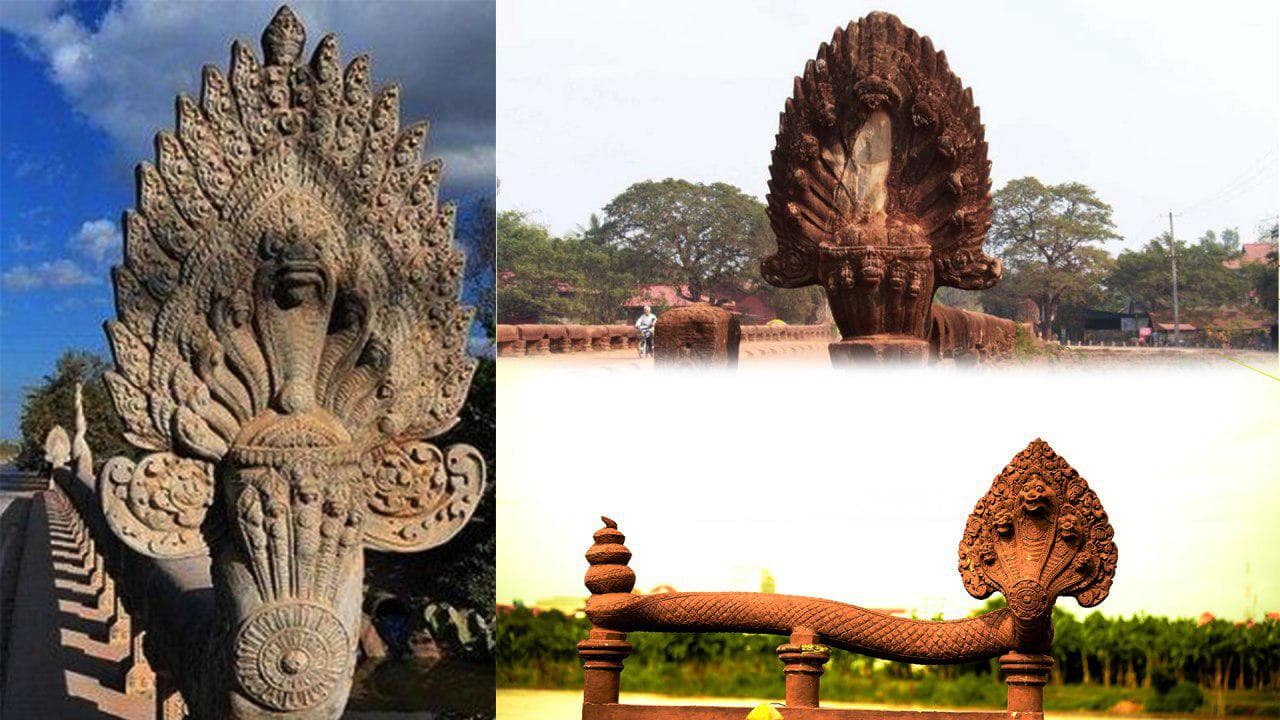Totemism exists in many cultures around the world, and Cambodian culture is one of those. When it comes to animals, we have domesticated animals for consumption, mythical animals in folktales or religious texts, and wild animals. These animals show the beliefs that our ancestors had since the olden days. Some animals are the gods’ rides, some are messengers, while others bring good or bad omens. We are going to talk about some domestic and mythical animals below, let’s find out what they are.
Cow
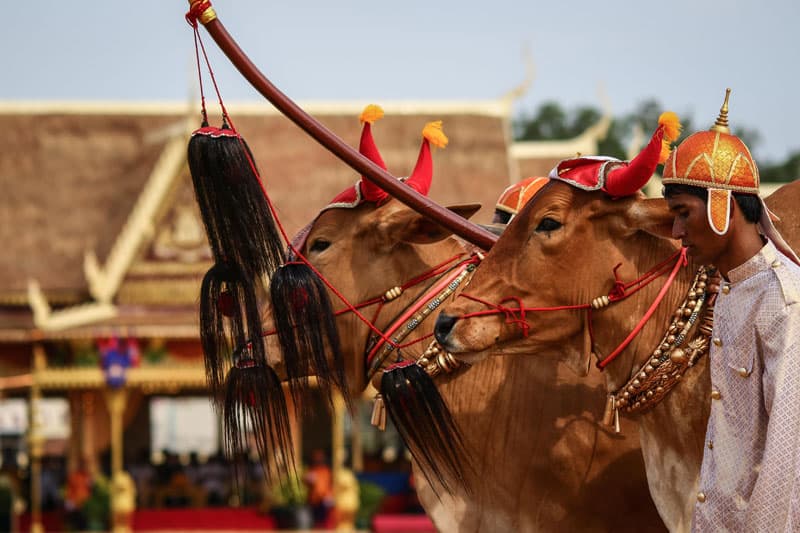
Cow will be the first thing that comes to many people’s minds when it comes to domestic animals. This bovine provides many benefits to our daily life, especially in the agricultural field. The word “cow” in our language is “Ko”, and it means heaven, light, sun, moon, water, earth, mother, and many more. In Buddhism, the cow represents intelligence and paramita. In Cambodia, Buddha has the name Kodom, from the word Ko and Dom. Ko means “sun” and Dom means “glorious” or “magnificent”, meaning he was the descendant of the great sun. This is why some Cambodian people and Buddhists in other countries don’t consume beef.
Crocodile

Crocodiles play a huge part in totemism in Cambodia as they reflect the reality in the society, both good and bad. Religiously, we have crocodile pennons as the symbols of the souls of the deceased. The history of the crocodile pennons will be discussed in a separate article, so stay tuned. Crocodile was also well known as the ride of Neang Kong Hing, the Ground Goddess. There are also many instruments and tools in the shape of crocodiles that we still use to this day.
However, the new generation views crocodiles in a negative way; especially those who are ungrateful. It is common for us to call someone a crocodile when they are ungrateful. There is more than that, we also call a person a “lost crocodile” when the person forgets who they are. Some people become famous and they forget their own identity and the fact that they are Cambodian. Those lost crocodiles are mostly those who abandoned Khmer identity and admired foreign cultures while criticizing their own cultures.
Elephant
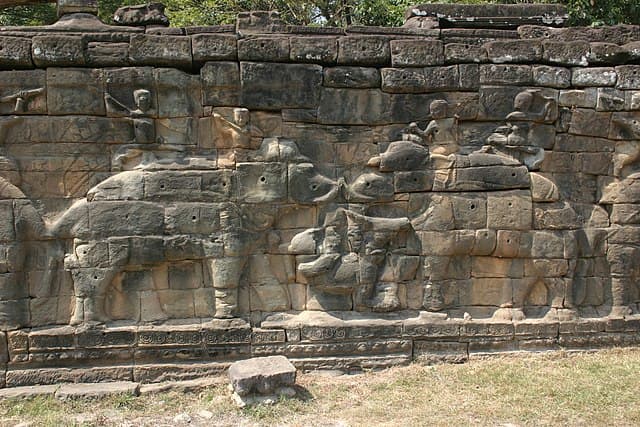
This majestic animal has a deep and strong in our ancient cultures and history. Elephants played a crucial role in the army as well as customs and religious beliefs. The elephants were royal properties, and they were important rides for the kings. In one of our folktales, the royal elephant would be released when a king died without a son. If the royal elephant kneels before someone, that person is chosen as the next king.
Religiously, the elephant was seen as the birth of the noble person. In fact, Buddha’s mother dreamed that a white elephant with 6 tusks entered her side. The royal seer predicted that the child she conceived would become a world ruler or a Buddha. And since the beginning of time, Khmer people have always seen elephants as the animals of power, strength, and prosperity. Unfortunately, the belief was too strong some rich people would spend a fortune buying elephant tusks for decoration. And that led to elephant poaching.
Garuda
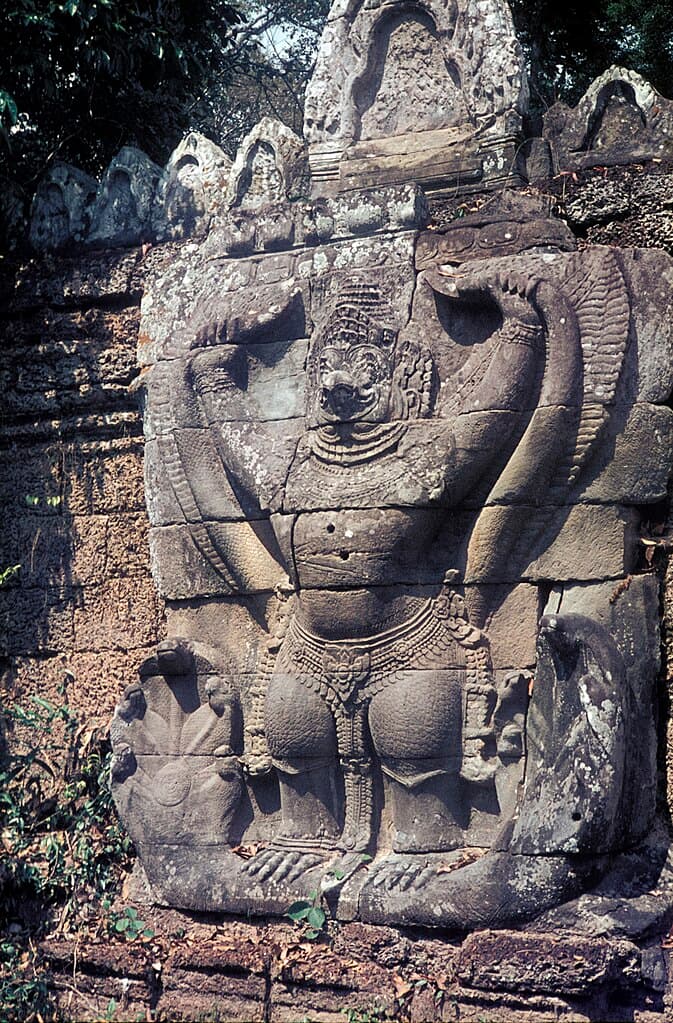
Garuda is a mythical creature with the body of a human and the head of a Garuda. This winged creature was depicted as the king of all birds due to its strength and prowess in the sky. Moreover, Garuda is also the ride of Lord Vishnu as well. In architecture, statues of Garuda are adorned with crowns and jewelry, usually put under the roof of the pagodas. This Hindi deity is so powerful he can protect sacred places from bad things.
In Cambodia, Garuda statues in powerful poses is the symbol of power of the Cambodia King. Simply put, Garuda represents a powerful king and boosts the king’s power when he had to go to war. For example, the statues of Garuda at Preah Khan temple with the legs on serpents’ heads and the hands gripping the serpents’ tails. It shows the immense power of our Kings in each era.
Hare
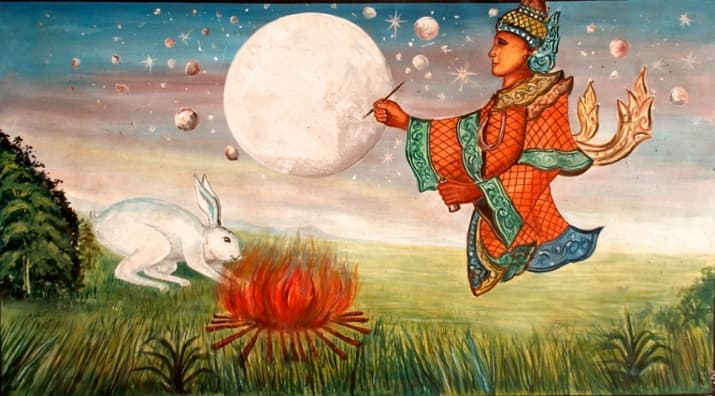
In one section in the Pali Canon, the Hare’s Sacrifice, mentioned the tale of the Buddha’s incarnation as a hare. This story was about the Buddha hare who offered himself as food to the King of the Gods, Shakra, who disguised himself as an old man. To reward this noble act, Shakra drew a picture of the hare on the moon. In our literature, Cambodian writers often choose hare as the representative of a noble protector and wise being who helps others. Growing up, I read many stories and tales that involve hares as the judge to find justice for other animals. Respectfully, the name of this character is always the Wise Hare. Every animal listens to and respects the Wise Hare because they know how fair he is.
Lion (Simha) & Tiger
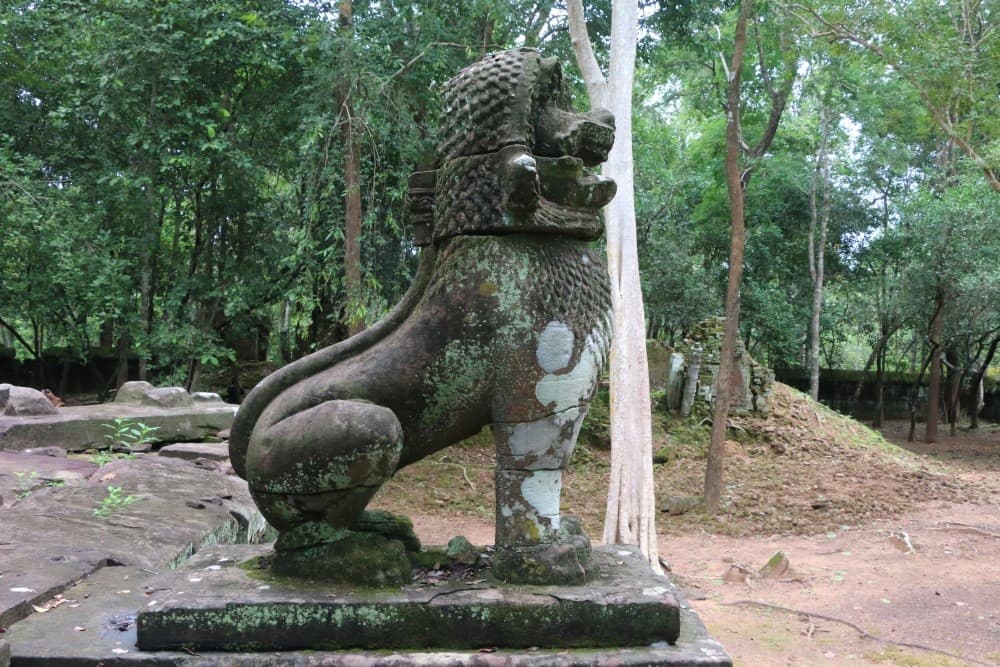
Both animals have a very strong influence on the beliefs of our ancestors because they are fierce wild animals. We all know that the lion is the king of the jungle. In our belief, the lion is the king of all land animals and it represents the land. Tigers are also very brave and powerful animals that are feared by all beings. It is common to see statues of lions or tigers in front of the gates of houses or pagodas in Cambodia. We believe that they are powerful animals that can prevent bad things and obstacles from happening.
Some people even wear pendants of a lion or tiger or even use the animals’ fangs as pendants. They believe that these pendants can protect them from bad things in their daily life. More than that, some people even have tiger tattoos on their bodies to show power and strength. Also, some believe that these tattoos help make weak-minded people to become braver and stronger.
Naga
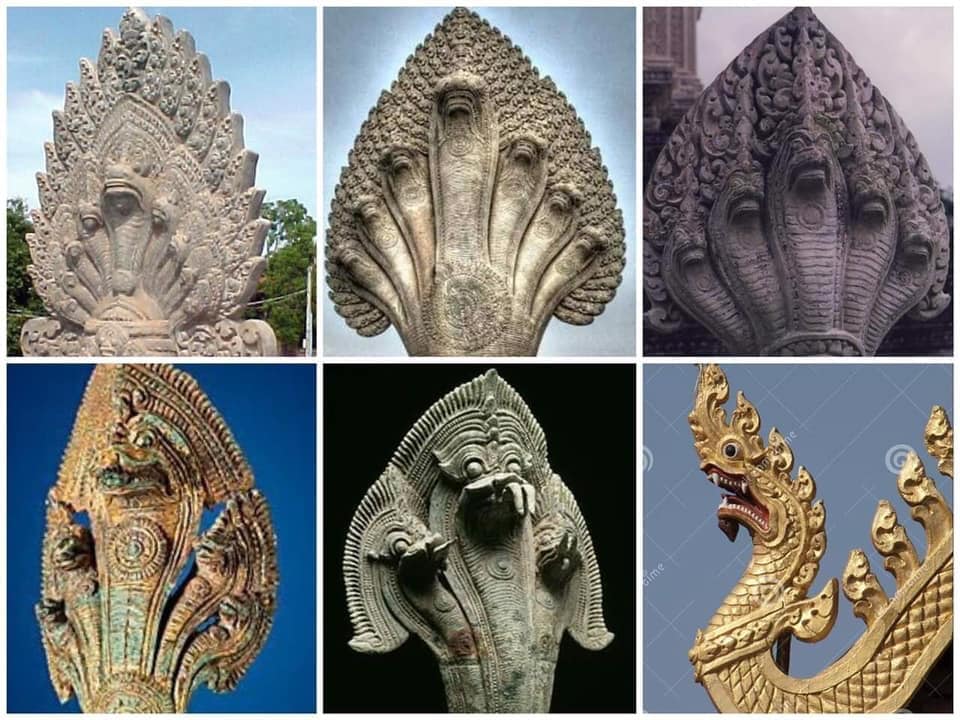
Since the beginning of time, Khmer people have believed that they are the descendants of the Naga princess. She fell in love with an Indian prince, and she left her kingdom in the sea to build her own kingdom on land. We also have a tale of this history, of Preah Thoang and Neang Neak (Naga Princess) or Queen Soma. In Cambodian culture, the naga is a mythical animal that represents the souls of Khmer ancestors who protect the Kok Thlok Kingdom. We believed that the naga king was the one who created our kingdom by drinking the sea water and revealing the land.
In Wedding
The strong roots of beliefs in naga also result in many practices in our traditional wedding ceremonies these days. Some of them are quite obvious and easy to recognize. The patterns of the wedding attire that the bride wears resemble the naga’s scales. And when the people are walking in a long line holding fruits and food, the long line represents the naga’s tail. We even have huge copper statues of Preah Thong holding the hem of Neang Neak’s body garment. This statue shows part of our traditional wedding ceremony where the groom has to hold the hem of the bride’s body garment.
In Religion
Apart from regarding nagas are our ancestors, Khmer people also worship this mythical creature in the religion. You can see naga carvings and sculptures on the door frames, rails, roofs, and many religious structures in Cambodia. They are the protectors, and the more heads they have also means the more powerful they are. In case you wonder, the head of the nagas are in odd numbers because we believe that even number represents death. We also believe that nagas are the servants of the Buddha in his afterlife. There are paintings and statues of the Buddha meditating under the protection of naga heads. One tale was about a 7-headed Naga King who protected the Buddha from a severe storm during his meditation.
To sum up, the naga is an important deity in pre-historic times because this creature is the symbol of water. Water is the source of life, and we also believe that naga is a bridge between the human world and heaven. Naga is a formidable being that represents bravery, dignity, happiness, power, protection, and water for agricultural use. This creature is a long-living serpent that molts and with the ability to live both on land and in the water. Probably, this is also why we have the year of the dragon (naga) among the other animals in the lunar year.
Phoenix
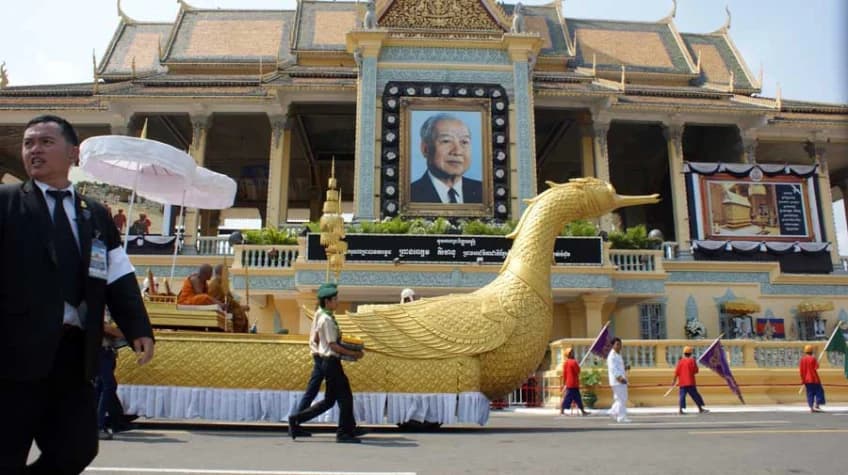
In Cambodian folktales, the phoenix (swan) is another king of birds who can fly high and far. We view the phoenix as a noble bird that eats and lives in a superlative environment. This mythical bird is seen as the creature of beauty, honesty, and prosperity. Economically, the phoenix is the symbol of economic stability. The fact that the bird can fly a great distance and height shows the development and sustainability in the future. This is why the phoenix is the logo of the Ministry of Economy and Finance in Cambodia. Religiously, the phoenix is the ride of Lord Brahma. The royal funeral with the phoenix means the king or royal family member will be in heaven with Lord Brahma.
Turtle
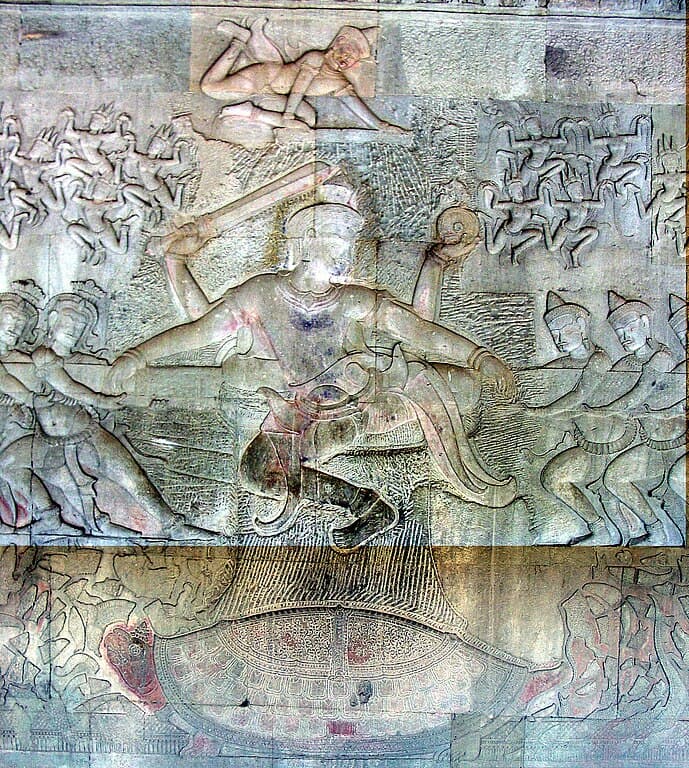
Turtle has a very deep root in Cambodian cultures when it comes to totemism, especially in the churning of the Ocean of Milk. Kurma is the second avatar of the Hindu preserver deity, Vishnu, who played an important role in the story. But that is more than just the influence of the Indian culture when it comes to the view of turtles in our culture.
In Agriculture & Daily Life
Turtle is a creature that represents land and water which are the sources of life. Cambodian people believe that turtles are the animals that provide good agriculture. Farmers used to keep turtle shells in the barn or raise turtles in the corn or rice barns for good harvests. Some believe that turtles are good-natured animals that provide happiness to the family and people. There were turtle shells found in the ancient grave during excavations in some sites.
In Architecture
Builders also use pictures of turtles on Yant talismans to hang on the house pillars. We believe that turtles help to make the pillar strong and bring happiness to the family. During an excavation in 1997, golden sheets with inscriptions of elephants, nagas, and turtles were found under the foundation of Kok Ta Sean Temple. The belief of burying the sheets was a symbol of strength and balance between the land and water. Another excavation at the Elephant Terrace also found 6 copper turtles under the foundation at the corners of the main pillars. These copper turtles could be the representative of Lord Vishnu’s avatar to support the temple’s foundation to stand for years.
In Religion
The most common belief that people still practice now is releasing turtles into the wild to let go of bad luck and karma. They release turtles in places with enough food and water on the holy day to get rid of bad luck. Those with strong beliefs took the turtle to the pagoda for blessing from the monks. Then there will be writing on the turtle shell before releasing into the pond in the pagoda or other water sources. While releasing, the person will say “I am releasing you to your freedom, please help me get rid of the bad things from now on.”
Even when random people catch the turtle with writing on its shell, they will not consume it. They are afraid that bad lucks will come to them because those are sacred turtles. Instead, they release it and they believe that doing so will also bring good things to them. This is also the reason why many Cambodian people don’t eat turtles because they are afraid of bad luck. However, there are also people who eat turtles once in a while because they believe that turtles will bring good luck to them.
To this day, various beliefs in turtle still exist in Cambodian cultures. In rural areas, people believe that turtle bones or shells have healing properties for certain diseases. Some rub turtle shells with the stone and water, then let the patients drink the water as traditional medicine. There are people who wear jewelry made from turtle shells and some even wear gold turtle pendants or rings. This is due to the belief that turtles are long-living animals that bring them longevity.
Bonus: Khmer People’s Belief In Tushes
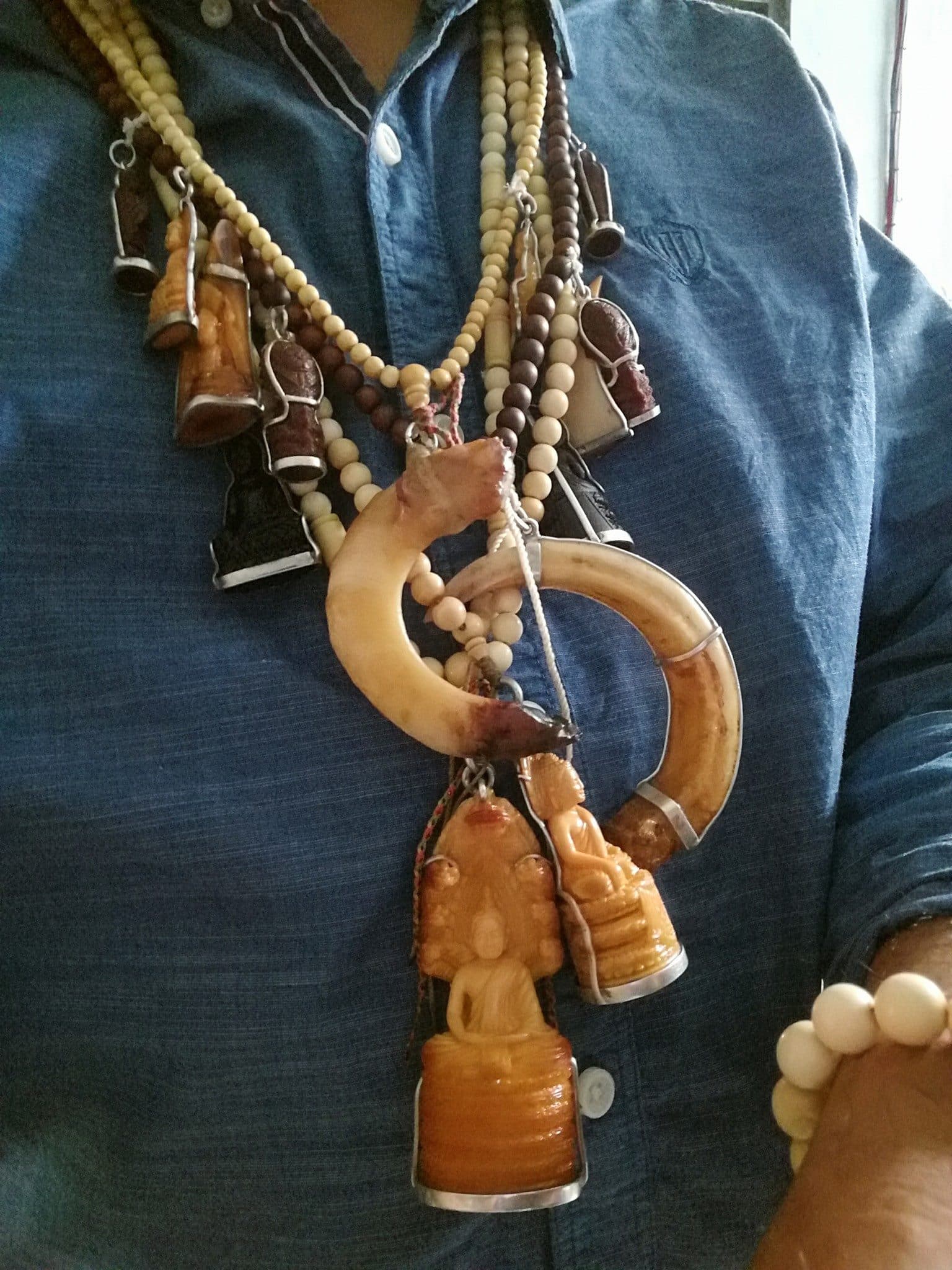
When it comes to tushes, wild boars are the first animals that every Cambodian person will mention. We believe that wild boar’s tushes have magical powers that bring both luck and safety to us. The longer the boar’s tushes or tusks, the more magical they are because that also means killing them is not easy. And if someone keeps the wild boar’s tushes, that person will be blessed with luck.
Things are more than just tushes, people have the same belief in items such as fangs, horns, and tusks. These items protect the animals in the wild, and having them equals protection for humans also. This is why many people, especially hunters and men wear animal fangs, tushes, or tusks as their bracelets, necklaces, or rings.
Related Post: Cambodian People’s Belief About Haircut
Source
